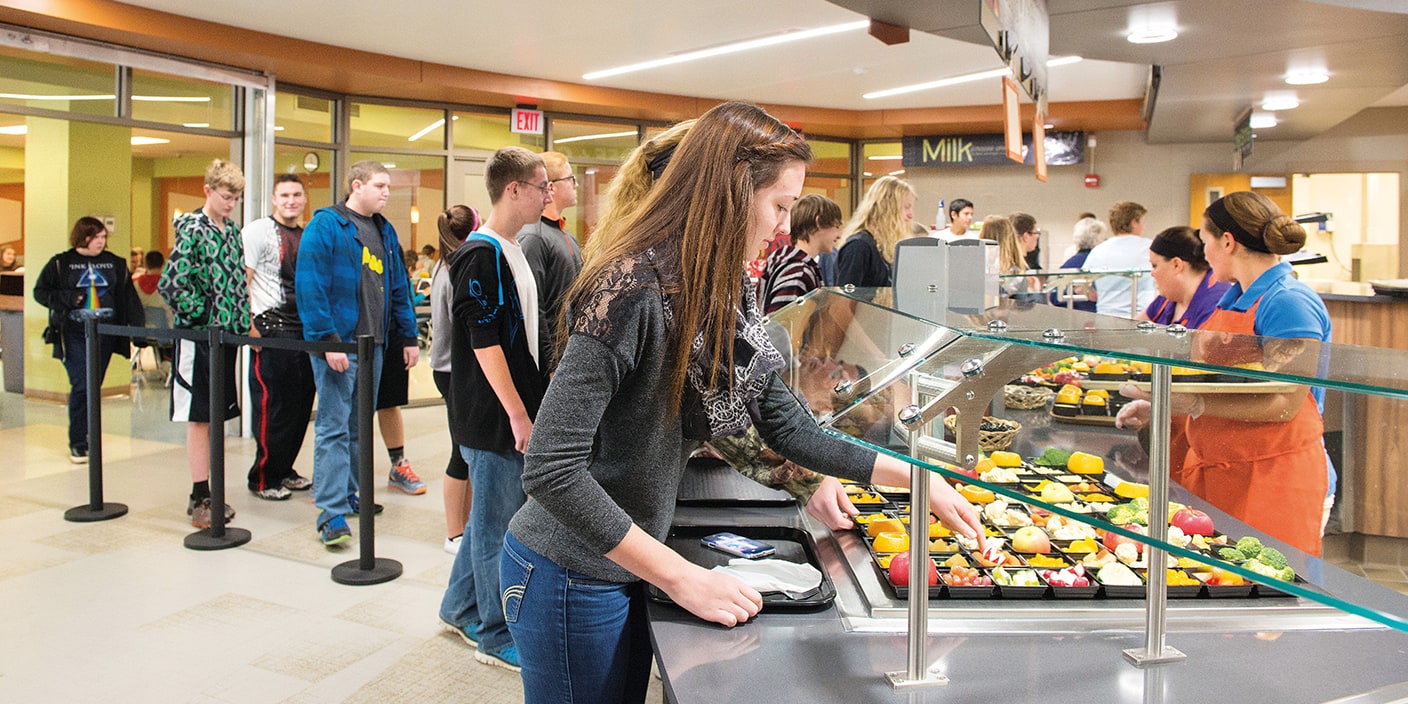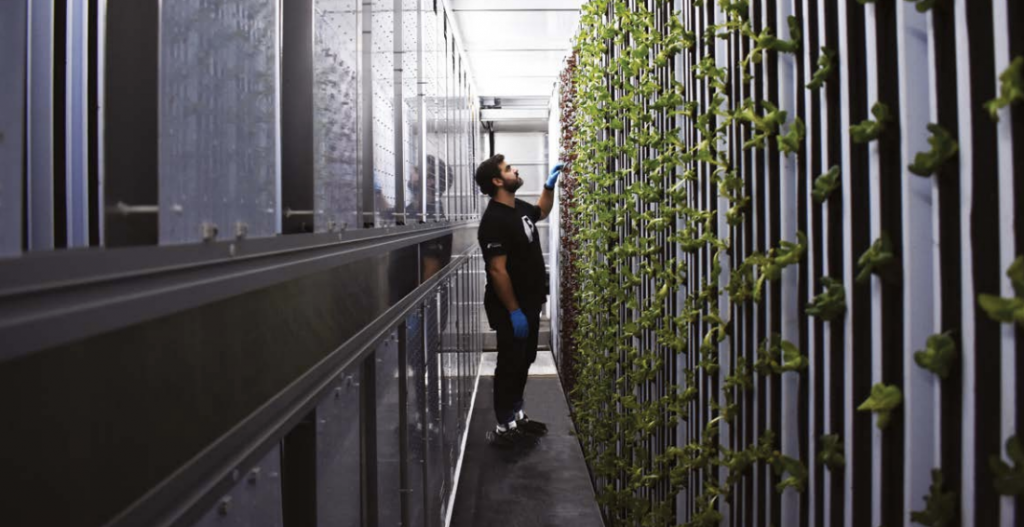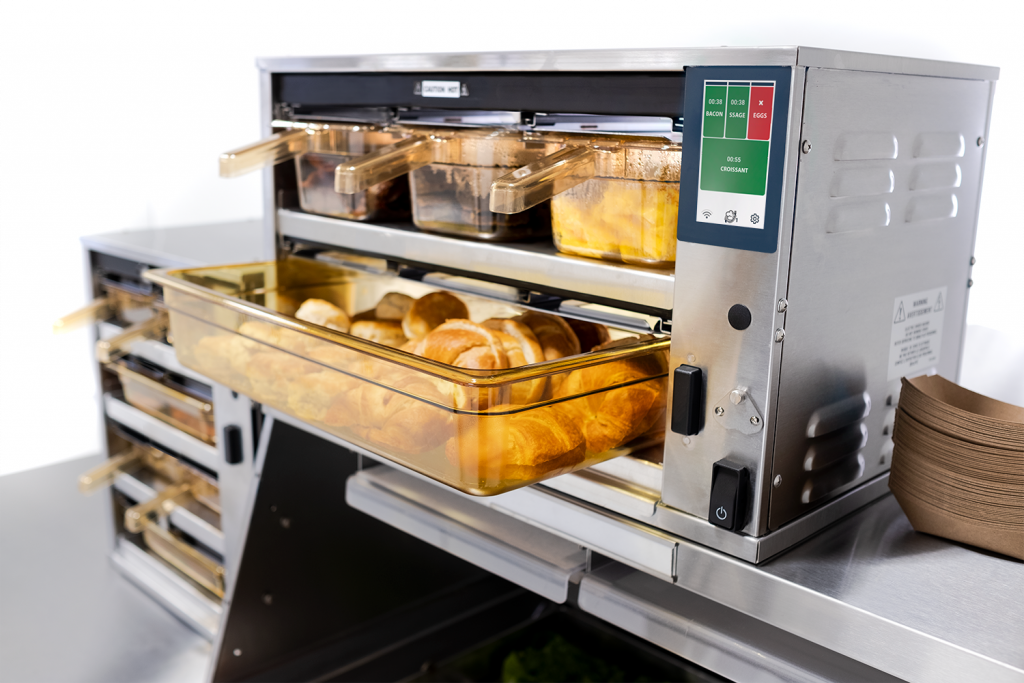
The passage of the Healthy, Hunger-Free Kids Act five years ago set the table for a new era in school foodservice in the US, one intended to bring healthy, nutritious food to youngsters after years of packaged, processed meals.
Today, the majority of schools are supporting the new nutrition standards set by that act and some are even exceeding them. The changes brought more fruit, vegetables and whole grains; less sodium and fat; and fewer excess calories to school foodservice. More nutritious lunches and school breakfasts enhance students’ ability to absorb and learn but, as Congress prepares to evaluate the impact of the changes, there are outside pressures from big food companies asking the government for a slow-down in the changes.
Research gathered by The Pew Charitable Trusts, however, shows most American parents and voters support strong nutritional standards for school meals and snacks and express concern about issues such as child obesity.
At that group’s Kids’ Safe and Healthful Foods programme, director Jessica Donze Black credits foodservice consultants with helping move the 69-year-old school lunch programme in new directions over the past five years. The changes in the child nutrition programme included an initial $100m for new foodservice equipment for the first time in 30 years – outdated kitchens are changing, with equipment suited to scratch cooking of healthier, more nutritious food. In the last few years, another $25m was made available, leading, Black notes, to an “infusion of money for some old kitchens.”
Her group conducted a study of changes taking place in school foodservice programmes, finding that by 2012, 55% of schools in the programme were moving to scratch cooking. “It’s a win-win if you can change,” she says.
Black estimates that 80% of the schools needed new equipment in order to serve healthy foods. “School foodservice directors are an innovative group,” she says. “They were used to not having equipment and knew more training was needed, but most districts had no budget for it.”
The Pew Trusts’ extensive polls of parents of school-age children, find that parents want
their kids to have healthy foods and 90% say they should have fruit and vegetables and free water to drink. And by working with school parent-teacher groups, Black says parents can help overcome problems.
“We see chefs working with schools as well to help school foodservice personnel create ways to add flavour. We underestimate kids’ love of flavours.”
Making space
At one consultancy, MVP Services in Dubuque, Iowa, Eric Norman FCSI, who completed a total of 40 school projects in a recent 18 month period, sees the serving line as a reflection of big changes in school feeding. “We are going away from foods from packages and cans. The hot entrée always used to be first. We try to put fruits and vegetables in the forefront now and find creative ways to make them more attractive. We’re seeing tiered service lines.”
The changes are affecting the back of the house where there are no longer any fryers, he observes. “There are more combi-ovens today and you can ‘fry’ in them, which is much healthier. Grab ’n’ go is now a much bigger option, on the forefront more in our designs like a C-store case. They can hold salad, and avoid long service lines, but still get all the components. That option is available later in the day too, before athletics. It helps sales,” Norman observes, adding that he’s seeing “a lot more breakfast service, and in high schools, there’s a push by the local dairy council for more lattes and coffee drinks.”
Two districts he worked with, Mason City and Clear Lake, Iowa, decided to find a way to make reduced-salt dishes taste better, introducing a number of spice options in a small spice station in the server. “It’s a whole new way of educating kids about healthy options,” Norman says.
Many districts are also working to promote breakfast, and students are discovering hot food as well as cold cereals, and are coming to school earlier to eat. The breakfast programme is a win-win for everybody,” says Norman. “School foodservice directors protested at first, but now they’re working to make it healthier.”
As a result of these changes, kitchens are getting larger. “There is more prep space now and the combi-oven has become the centrepiece in a lot of our projects because it is so versatile,” Norman points out. “The cafeteria is changing too, shifting away from more institutional design to a more friendly atmosphere to make the students like the space and want to go there, and to keep them there. It now has booth seating and high tops like a restaurant, and even charging stations for cell phones.” The past few years, he adds, have seen every educational group – K-12 and up – making these changes.
In Decorah, Iowa, a “progressive” city when it comes to sustainability that uses fresh foods in school lunch programs, the high-school kitchen was greatly expanded to meet current needs. The emphasis on fresh foods drove certain aspects of the design, says Norman, noting that they had to accommodate more refrigeration for fruit and vegetables.
“They also do some on-site baking for the school so we did have to add a large rotating rack oven and proofers into the kitchen space. We did re-use one existing combi-oven from the old kitchen as well as adding a second to meet the demand. The combi-ovens allow the district to do a large amount of products in those ovens,” he adds.
There were some challenges with putting the kitchen in the old gym space, among them an existing concrete sub-floor, beneath the old wooden floor, that could not be removed and only allowed drains, floor drains and floor troughs to be located in certain areas as to not hit the existing sub-floor.
This made the design a challenge for Norman and his team, who had to locate equipment based on where they could run the drain lines.
“We were able to strategically place items and design in a way to avoid underfloor conflicts and still meet the needs of the foodservice programme,” he says.
The timeline on the project was tight and it needed to be completed quickly. With more federal money available today, schools are moving faster to catch up.
“Bond referendums used to fail for several years so there was no money to renovate but now, they go through, yielding more diversified menus and good quality,” Norman says. The Decorah school also operates a family/consumer science programme with its own full commercial kitchen, teaching students to cook and serve food to the public twice a week.
“We did a WoodStone oven, combi-oven and blast chiller for that programme,” Norman recalls. “They serve a few hot entrées and hot and cold sides. There’s a big emphasis on farm to table and sustainability. We built a big walk-in store for all the fresh produce.
MVP biggest triumph was ‘working around’ the challenges presented by the concrete sub-floor.”
More flexibility
Elsewhere, one school foodservice director, Janeen Peterson, director of food services at Prior Lake-Savage Area Schools, a Green Ribbon Sustainability award winner, has an atypical take on the industry. The large Minneapolis-St Paul school system dropped out of the National School Meals Program last year before she came aboard, based on feedback from the students.
“We took the opportunity to listen to our kids,” Peterson says. “They wanted more flexibility and healthy food in different portion sizes. They told us they didn’t want to take foods they wouldn’t eat and they wanted a salad bar. We still meet with them in focus groups.”
The system is also starting a school garden in one of the facilities. The high school is doing more scratch cooking and students are able to text feedback on new food to the foodservice director. Favourites are dishes where students can choose toppings such as those at the pasta bar and deli station.
Wellness in the Schools (WITS), a group that began in New York City in 2005 and develops programmes for healthy eating, environmental issues and opportunities for regular play/exercise, was a member of Michelle Obama’s Chefs Move To School programme. Today WITS works with New York City’s school foodservices, placing chefs in schools 25 hours a week – an initiative started with executive chef and owner Bill Telepan of Telepan.
“They sample foods with the kids,” says Reanna Kovalcik, development and communications director at WITS. The students learn about new foods and take home recipes for dishes they like to their parents. “Mini lessons focus on fat and sugar content in foods and beverages,” she says. “Culinary labs are co-ordinated with the science class. Chefs teach them about dishes such as guacamole or carrot soup.”
The programme has grown and will be expanded to Camden, New Jersey, as well as Miami where they’ll do a pilot.
“We ask foodservice directors to work more from scratch,” Kovalcik says. “The unions are thrilled because we are bringing skills to their members and helping in training.”
She’s says she’s also seeing more food vendors doing healthier options today. “We ask them to feed kids real foods with fewer and more pronounceable ingredients. We emphasise local where possible.”
Food is part of the conversation
In Indianapolis, Indiana, Scott Reitano FCSI of Reitano Design, agrees that training for foodservice personnel is key to creating healthier, more nutritious fare. School foodservice, over the 69 years of the programme, earned the reputation for “being yuck and continuing to serve food the same way,” he says.
Architects and designers have started to change the way school lunch facilities are built, he points out. Today, he’s seeing high schools allow students to eat wherever they please, on the floor, at community tables or in seating constructed on various levels, and he praises architects who understand that “food has to be part of the conversation”.
Similarly, at Sustainable Food Systems, founder and president John Turenne FCSI, sees growing improvement in the path school foodservice is taking today, noting in particular the shift to cooking food as opposed to reheating.
Turenne would like to see the federal government provide more money to school foodservice programmes, noting that schools rely on fixed revenue and income, which makes the school foodservice department’s role very challenging.
Overall, he praises improvement in standards and practices the past few years and the giant food industry firms have “adapted to new levels of sodium and sugar and will make chicken nuggets that meet the standards, but continuing to provide processed crap. School foodservice directors can say standards have improved and are being met, but it’s very frustrating and some operators are asking why.”
The process, Turenne adds, is “very political with the School Nutrition Association pressured by big food companies to ask the government to slow down the changes. There’s a lot of activity with some foodservice directors saying kids won’t buy into healthy foods. There are some donuts out there that have 36 ingredients on their labels, and maybe two or three ‘real’ ones.”
Sue Holaday




